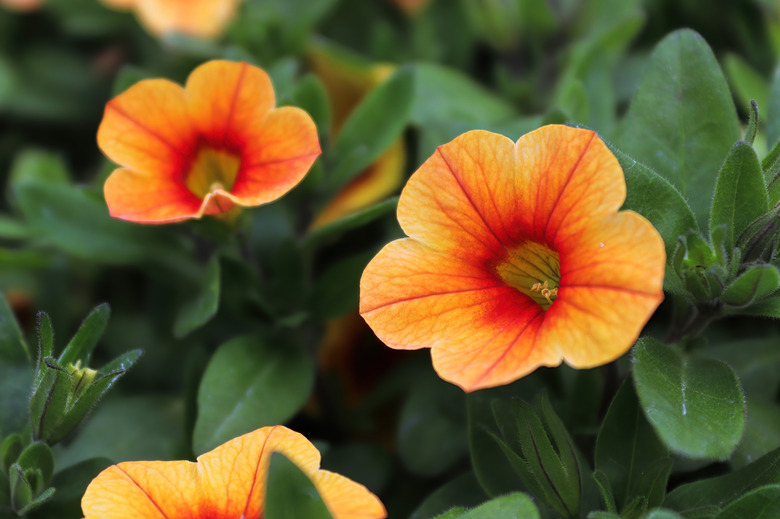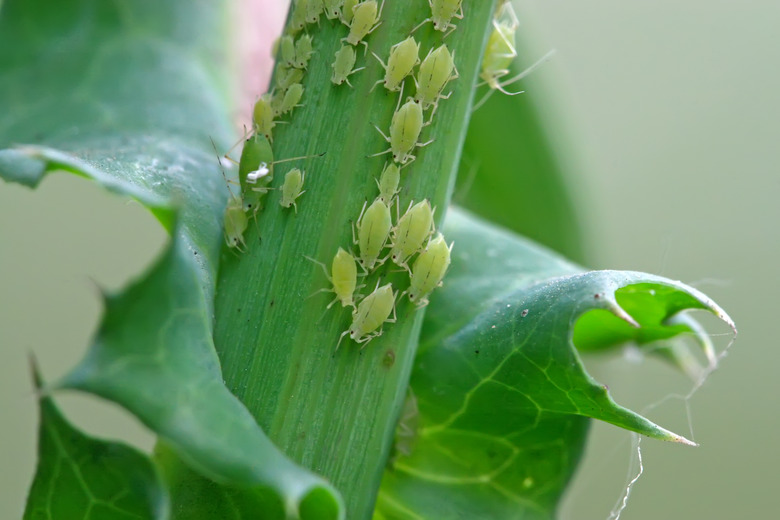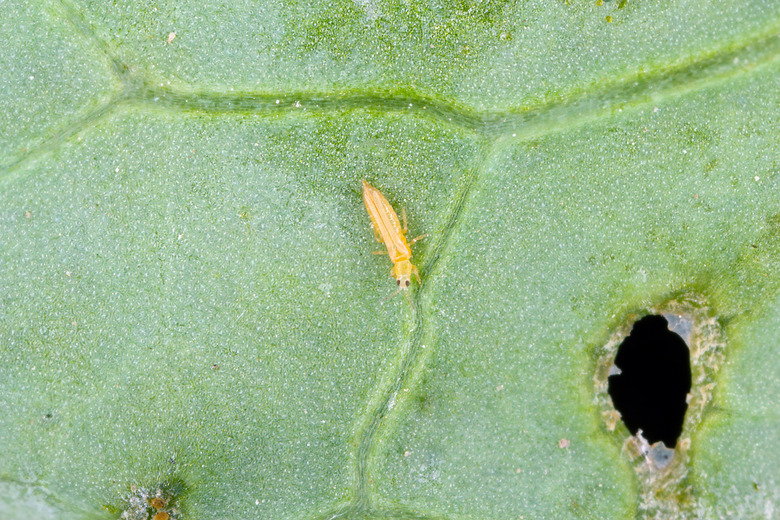What Are The Tiny White Bugs On My Petunias?
We may receive a commission on purchases made from links.
Petunias (Petunia x hybrida) fill many needs in the landscape, including mass plantings, borders, ground covers, hanging baskets, and containers. The plants also work well in rock gardens or planted where their trumpet-shaped flowers and ovate leaves cascade over walls. Petunias grow as annuals in all locations, but are herbaceous perennials in U.S. Department of Agriculture plant hardiness zones 10b through 11a.
Petunias are relatively pest-free, but several white bugs — like aphids, whiteflies, and thrips — can create problems.
Recognize Aphids on Petunias
Recognize Aphids on Petunias
Aphids are small, pear-shaped insects that come in several colors, including white. These insects damage petunias by sucking the sap from the plants with their long, straw-like mouthparts. Small infestations typically don't cause much damage or require treatment. A severe aphid problem is obvious, because the insects gather in masses, covering plant stems, buds, and foliage. They can cause yellowing, puckering, or distorted leaves.
Aphids secrete a concentrated waste called honeydew. These secretions may lead to sooty mold, a fungal problem that can blanket the plants in a velvety black layer, which , if heavy enough, can impact the plants' ability to photosynthesize. You can wash sooty mold off the leaves with a blast of water or wipe it off with a damp cloth. Lady bugs are among the beneficial insects that reduce the aphid population.
Recognize Whiteflies on Petunias
Recognize Whiteflies on Petunias
Whiteflies are similar to aphids in several ways. They also suck vital juices from petunias and produce honeydew. They look quite different, however, and you are most likely to notice them in their last winged stage of development when they are white gnatlike insects that fly around the plants when disturbed.
Symptoms of serious whitefly infestations include dry-looking foliage, leaf drop, and possible death of leaves.
Recognize Thrips on Petunias
Recognize Thrips on Petunias
Thrips also have special mouthparts designed for sucking juices from the petunia's leaves, buds, and flowers. Thrips are elongated, less than 1/20 inch long, and some species are white with fringed wings. Because of their small size and feeding habits on unexposed portions of the plants, control is often difficult, and many times, damage occurs before the pests are discovered.
Check for thrips by holding a white piece of paper underneath a petunia and shaking the plant. If thrips are present, they'll fall onto the paper. Additional indications of a thrip infestation include distorted or curling leaves, deformed and discolored flowers, a silvery discoloration on leaves and petals, and leaf drop.
Manage Pest Populations Ecologically
Manage Pest Populations Ecologically
Unless aphid, thrip, or whitefly infestations are severe, many times beneficial insects can tackle the problem alone, without any other treatment. To encourage beneficial insects (like lady beetles and minute pirate bugs), don't use chemical insecticides. These kill beneficial insects as well as pest insects.
You have a variety of management options at your disposal that won't disrupt populations of beneficial insects, but will control thrips, aphids, and whiteflies and are environmentally friendly. These include the following:
- Wash off whiteflies, thrips, and aphids with a strong blast of water from a hose.
- Don't overfertilize petunias with nitrogen since excessive new growth attracts aphids and thrips.
- Keep weeds down in the garden since weed populations attract many pests such as aphids and thrips.
- Prune out distorted, curled, or infected leaves. Always use sanitized pruning shears to help avoid spreading disease among plants.
- Use an insecticidal soap spray, which is milder and safer for beneficial insects than synthetic pesticides.



